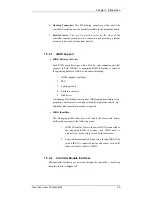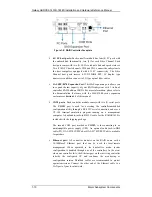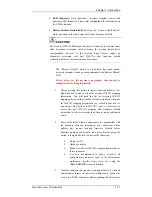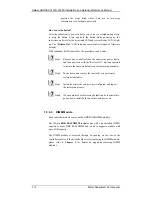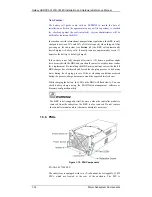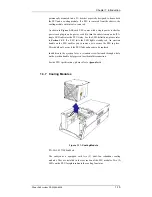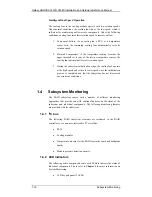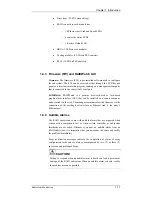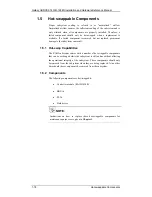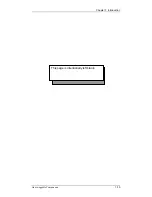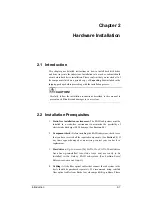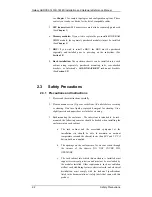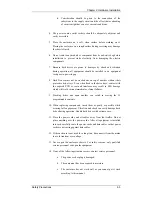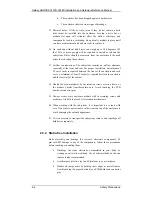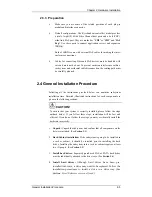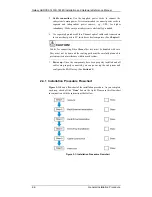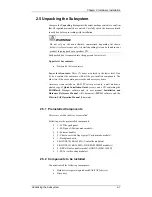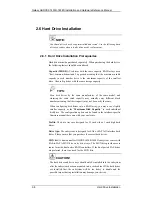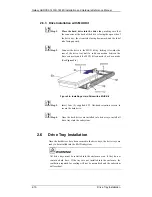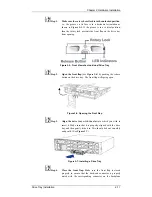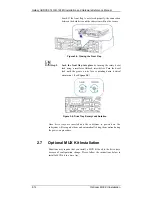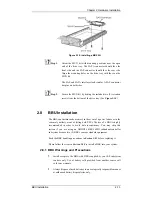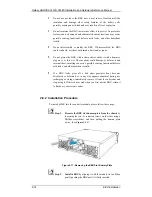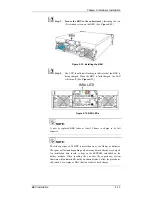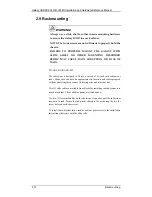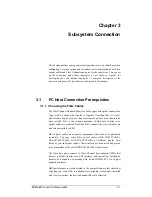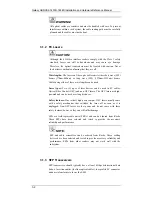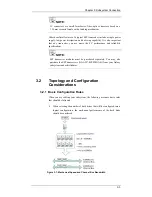
Galaxy GHDXS2-1430R-16F4D Installation and Hardware Reference Manual
2-4
Safety Precautions
d.
The enclosure has been dropped against a hard surface.
e.
The enclosure shows obvious signs of breakage.
15.
Thermal notice: All drive trays (even if they do not contain a hard
drive) must be installed into the enclosure. Leaving a drive bay or
module slot open will seriously affect the airflow efficiency, and
consequently lead to overheating. Keep a faulty module in place until
you have a replacement unit and are ready to replace it.
16.
An enclosure without disk drives can weigh up to 19 kilograms. (42
lbs.) Two or more people will be required to install or relocate the
subsystem. Drives should be removed from the enclosure if the need
arises for relocating the enclosure.
17.
Airflow considerations: The subsystem requires an airflow clearance
especially at the front and rear. For proper ventilation, a minimum of
2.5cm (1 inch) is required between the front of the enclosure and rack
cover; a minimum of 5cm (2 inches) is required between the enclosure
and the rear wall of the cabinet.
18.
Handle the system modules by the retention screws, ejection levers, or
the module’s metal frame/faceplate only. Avoid touching the PCB
boards or connector pins.
19.
Always secure every enclosure module with its retaining screws and
make sure it is held in place by its retention mechanisms.
20.
When working with the subsystem, it is important to use tools with
care. Do not place power tools or other items on top of the enclosure to
avoid damaging the outward appearance.
21.
If it is necessary to transport the subsystem, remove and repackage all
disk drives separately.
2.3.2 Static-free Installation
Static electricity can damage the system’s electronic components. To
prevent ESD damage to any of the components, follow these precautions
before touching or handling them:
Discharge the static electricity accumulated in your body by
wearing an anti-static wristband. Use of other methods, such as an
ionizer, is also recommended.
Avoid carpets, plastic, vinyl, and Styrofoam in your work area.
Handle all components by holding their edges or metal frames.
Avoid touching the exposed circuitry on PCB boards and connector
pins.

